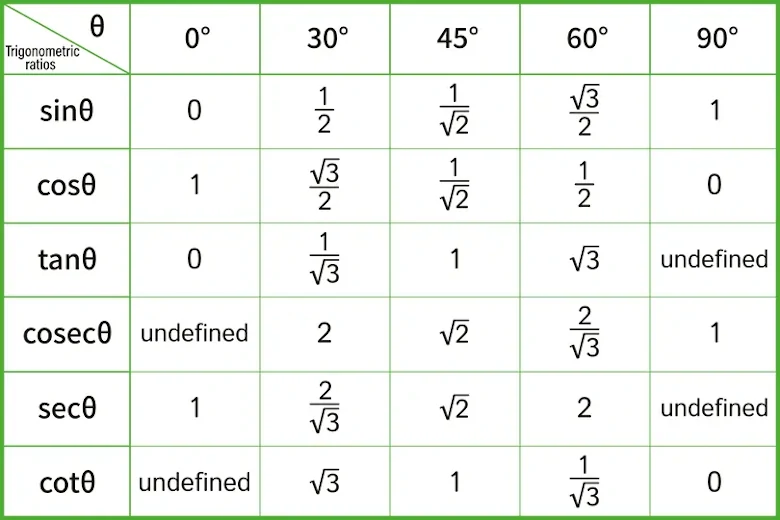Understanding Mode in Statistics: Significance and calculation

In the intricate world of statistics, understanding the mode is not just a choice but a necessity. The mode, a statistical powerhouse, reveals crucial insights into data distribution. In this meticulously crafted guide, we'll take a comprehensive journey into the meaning, significance, and the art of calculating the mode effectively.
Understanding Mode in Statistics
What is Mode?
The mode is the value that appears most frequently in a dataset. It's that high peak you see in the data distribution, and it holds significance in various fields, from education to business.
Significance of Mode
Understanding the significance of mode is vital. It provides insights into the most common observations in a dataset. For instance, in a survey of customer ages, the mode would be the age that most customers fall into, making it a critical factor for businesses.
How to calculate Mode
Calculating the mode is relatively straightforward. To find the mode, identify the value that appears most often in the dataset. It's important to note that a dataset can have multiple modes, which is known as a multi-modal dataset. In such cases, each mode is valuable in understanding the data.
Calculation methods
There are different ways to calculate the mode, depending on the nature of your data.
- For categorical data, you'll count the occurrences of each category to determine the mode.
- When dealing with continuous data, you'll need to create intervals or bins and identify the mode within those intervals.
Handling Multi-modal datasets
Multi-modal datasets are a bit more complex but equally fascinating. They unveil the diversity within your data, showing that the world isn't just about single peaks. Each mode within a multi-modal dataset represents a different facet of the story, and recognising these nuances can be a game-changer in decision-making.
How to calculate Mode?
In the world of education, imagine a class's test scores dataset: [85, 92, 78, 92, 90, 78, 88]. Calculating the mode in this case would reveal that 92 is the mode, as it appears twice, more frequently than any other score.
Real-world applications of Mode
The mode's relevance transcends theory; it's a valuable tool in practical scenarios.
Marketing insights
In marketing, the mode helps identify the most popular product, guiding inventory and marketing strategies. By analysing sales data, businesses can ensure they stock enough of the preferred products.
Healthcare and medical research
In the realm of healthcare, the mode assists in identifying the most common illnesses in a population, enabling governments and healthcare providers to allocate resources efficiently and formulate public health policies.
Educational scenarios
Educational institutions use the mode to understand the most common learning difficulties among students. By identifying these challenges, they can develop tailored teaching strategies for better learning outcomes.
Mode vs. Mean and Median: When to use each
While the mode shines a spotlight on the most common value, it's essential to know when to use it in comparison to other statistical measures like the mean and median.
Comparative analysis
- Mode: Ideal for identifying the most common value.
- Mean: Reflects the average value.
- Median: Represents the middle value in a dataset.
Use cases in different fields
In the corporate realm, the mean might help calculate the average income of employees, while the median could assist in determining the middle salary. The mode, on the other hand, would indicate the most common income range, guiding HR policies and benefits.
Historical perspective: The timeless evolution of Mode
The concept of the mode, a cornerstone of statistics, is not a recent invention. Its roots stretch deep into the annals of history, revealing a remarkable journey of discovery and adaptation.
Ancient beginnings
The earliest recorded use of the mode can be traced back to ancient civilisations. In Babylon, one of the cradles of early mathematics, scribes and scholars in the 18th century BCE were already using rudimentary forms of the mode to understand population trends and resource distribution. They sought to identify the most common crops and livestock, a practice that was vital for sustaining their thriving society.
As time marched forward, the ancient Greeks, renowned for their contributions to various intellectual pursuits, including mathematics and philosophy, began to embrace the mode. Philosophers such as Pythagoras and Aristotle explored its applications in areas like ethics and natural phenomena, using it as a tool to make sense of the world.
Renaissance revival
The mode experienced a revival during the Renaissance, a period characterised by a rekindled interest in art, science, and mathematics. In the 16th century, European scholars and polymaths began to refine the concept of mode and its applications. The emergence of probability theory, led by luminaries like Gerolamo Cardano and Blaise Pascal, opened new avenues for understanding randomness and chance. The mode, with its capacity to identify the most likely outcomes, played a pivotal role in early probability studies.
The Industrial Revolution and beyond
With the advent of the Industrial Revolution in the 18th century, the mode found practical applications in business and manufacturing. As large-scale factories and industries emerged, it became essential to determine the most common defects in products, aiding in quality control and process improvement.
Modern Statistical significance
In the modern era, the mode has maintained its relevance and has grown in significance. Today, with the advent of powerful computing and data analysis tools, statisticians and data scientists use the mode in diverse fields. Whether it's in market research to identify the most popular consumer preferences, in healthcare to pinpoint common ailments, or in education to recognise prevalent learning challenges, the mode remains a crucial element in informed decision-making.
The Mode's journey continues
The historical perspective of the mode is a testament to its enduring relevance. From its humble beginnings in ancient civilisations to its pivotal role in today's data-driven world, the mode has consistently adapted and evolved to meet the changing needs of society. Its journey is a reminder that the quest for understanding data and patterns is a timeless endeavour, and the mode, with its simplicity and power, continues to be a guiding light in this ever-expanding landscape of knowledge.
Key takeaways for effective learning
- The mode is the most frequently occurring value in a dataset.
- A dataset can have multiple modes, and each is significant.
- Mode helps in identifying common trends and patterns in data.
In conclusion, mode is a vital concept in statistics. It offers valuable insights into data distribution, facilitating well-informed decisions. Whether you're a student, researcher, or professional, mastering the mode is essential in data analysis.


 SG
SG  VN
VN 


















